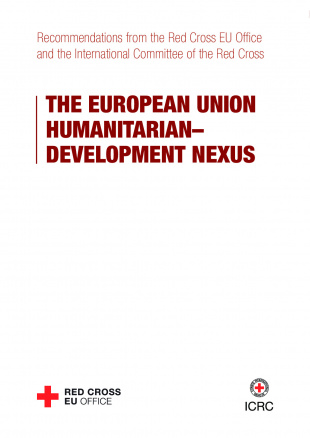The EU Humanitarian-Development Nexus
The nature of today’s humanitarian crisis situations is increasingly complex and transcends the traditional lines between humanitarian aid and development cooperation. Humanitarian emergencies are lasting longer and have become more volatile and multifaceted, putting the traditional division between short-term humanitarian relief and longer-term development to the test. With more than 68.5 million people worldwide forcibly displaced by conflict, violence, or human rights violations, and 130 million reliant on humanitarian assistance, the humanitarian system requires additional support to address needs of such magnitude and diversity.
The European Commission has translated its response to long-term crises into commeasurable commitments and concrete policy initiatives based on the Council of the EU’s May 2017 Conclusions on Operationalising the Humanitarian-Development Nexus.
Recommendations
In this context, National Red Cross Societies in the EU and Norway, the IFRC, and the ICRC make the following recommendations to the EU and its Member States:
- Guarantee a needs-based approach to humanitarian assistance, which fully respects the humanitarian principles, international human rights law, and international humanitarian law.
- Ensure a high degree of participation and engagement from Civil Society Organisations.
- Invest in building the resilience of people and communities, with a focus on local actors.
- Apply context-specific approaches to all programming within the Humanitarian-Development Nexus.
- Allocate sufficient, flexible, accountable and transparent multi-year funding.
- Ensure that humanitarian aid and development cooperation budgets and funding instruments remain separate and independent from each other in the next Multiannual Financial Framework (2021-2027).
- Integrate analysis and lessons-learned throughout the Humanitarian-Development Nexus development and implementation processes.


